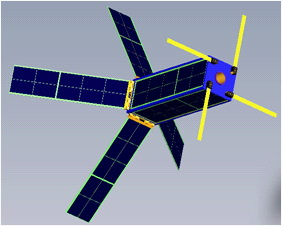Suggestion for New Satellite
Suggested by PE0SAT on: 2023-12-13 09:57
Citation: Update satellite image
Verdict: Approved
Reviewed by - on: 2023-12-13 10:07
| Name | QUAKESAT |
| NORAD ID | 27845 |
| Followed NORAD ID | - |
| Alternative Names | - |
| Description | The California company QuakeFinder has hopes for extremely low frequency electromagnetic waves ( ELF ), which seem to precede some earthquakes – and it is not alone: The Russian compass launched in December 2001 also carries a corresponding sensor. » Nobody knows if it works, « says QuakeFinder, » but you can't know if you don't try it. « The emission of the ELF waves could have something to do with the beginning of the breaking of crystalline rock, creating a plasma. If the project, which only costs around 1 million $, delivers convincing results ( that would be quickly confirmed by more precise ELF measurements on the ground ), a larger satellite could follow and the data sold. For example, weather services,which could then incorporate earthquake warnings into weather maps ... QuakeSat has the mass 10 x 10 x 30 cm. So it is a triple CubeSat to have a sufficient size for a magnetometer on a telescopic mast. The satellite was built in the Space Systems Development Laboratory at Stanford University under the direction of Professor Robert Twiggs. The receiver unit itself comes from QuakeFinder. |
| Owner/Operator | - |
| Status |
|
| Countries of Origin | |
| Website | - |
| Dashboard URL | - |
| Launch Date | June 30, 2003, midnight |
| Deploy Date | - |
| Image |  |